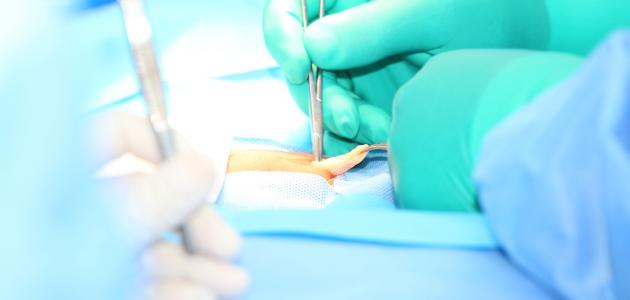Female depression is one of the very common diseases among women, as global statistics indicate that 50% of women who have had children in the past suffer from some of these depression, but only 10-20% of these women see doctors and 10% of those who see doctors are performed for them. Surgery.
Female lameness means the prolapse or descent of the main pelvic organs (the bladder, the uterus or the rectum, which is the place where stool comes out) through the vaginal tissues, so that this appears in the form of a bulge or bulge in the vaginal wall, and this usually occurs during a long period that extends for years, except that Sometimes it can happen quickly and for a short period.
Contents
Types of women's headaches
There are many types of female infertility, which may occur together or one separately:
- Bladder prolapse: (cystocele)
It is a bulge in the upper part of the vaginal wall, and it extends downwards until it reaches the external opening of the vagina.
A prolapse of the bladder is often associated with the presence of urinary incontinence, since in most cases there is weakness in the tissues supporting the urethra (the part that carries urine from the bladder to the outside), with an emphasis that not all women who suffer from prolapse suffer from incontinence as well. The treatment for prolapsed bladder is completely different from the treatment for urinary incontinence.
Some cases of major hypotension may cause a blockage in the urethra, which leads to urine reflux into the kidneys and serious complications in both.
- Uterine prolapse (uterine prolapse)
It is the slippage or prolapse of the uterus from its normal position so that it hangs down to the external vaginal opening and sometimes
The uterus is completely outside the vagina (procidentia), and this leads to swelling of the uterus and exposes it to frequent infections and ulcers, and this may result in urinary incontinence and obvious difficulty and pain during sexual intercourse for both spouses.
- Background lagging:
It is the prominence of a part of the rectum (the large intestine) through the lower vaginal wall, and this is usually accompanied by constipation and difficulty in passing stool, forcing women to press the finger on the site of the lumbago to complete the exit process.
- Small bowel depression: (Enterocele)
It occurs in women who have had a hysterectomy in the past, and the supporting tissues of the uterus are not attached during the operation, which leads to the sliding of part of the intestine and pressure on the vaginal wall, and this appears as a clear protrusion in the middle part of the vagina.
Causes of female vocalizations
Female lameness occurs as a result of weakness in the pelvic muscles that support the vagina, and there are many factors that help in this, including:
- Age and postmenopausal age.
- Frequent births, especially if the weight of the children is more than 4 kg, or if there is the use of forceps or vacuum pumps during childbirth.
- Some gynecological operations such as hysterectomy.
- Weight gain.
- Chronic cough.
- Some neurological diseases, especially those that affect the nerves of the pelvic muscles.
Symptoms and problems that may result from female libido
There are several symptoms that may occur as a result of female lameness, and some of these symptoms depend on the location and type of lameness. Among these problems in general:
- A feeling of swelling and heaviness in the vaginal area, and sometimes a woman may feel the presence of a lump coming down from the vagina, especially after standing for a long time or when stool comes out, or if she has a strong cough.
- Lack of control of urine and other social and health problems that may arise from effort such as coughing, sneezing, laughing and exercising.
- Dryness in the genital area and sometimes even blisters with pain in the lower back.
- Chronic constipation, so that some women have to push the vagina with their finger to pass stool, while sometimes not controlling the stool.
- Problems and pain during marital intercourse, and sexual dissatisfaction for both husband and wife
- Chronic pelvic pain.
- Frequent urination more than 6-8 times a day, and waking up at night to urinate.
- Lack of urinary control of all kinds.
- Incidence of urine and no feeling of emptying the bladder completely after the completion of the process of urination
- Failure to fully empty the stool after the bowel movement.
Treatment of female seborrhea
It is necessary here to emphasize the importance of a correct diagnosis and knowledge of the type and size of lamellar disease. The treatment of these diseases is divided into two parts:
Surgical treatment:
There are several surgeries to treat gynecomastia, and with the advancement of science in recent years, there has been a great development in this matter.
Traditional surgeries lead to a return of depression by up to 30%, but the presence of modern networks (Mesh) and the clear development in laparoscopic surgery led to high success rates and reduced the rate of recurrence of lacrimation to less than 10%.
Non-surgical treatment:
It is usually for minor failures or for elderly women who have a threat to their lives as a result of the procedure.
This type is represented by a physical therapy procedure to strengthen the pelvic muscles, and sometimes some plastic rings (Pessaries) are used to raise the depression.
Vaginoplasty
Vaginal sagging is a relaxation in the muscles supporting the vagina, and it is a form of female subduction, but it does not appear in the form of a protrusion, but rather loosening and sagging in all vaginal tissues, as it is known that contraction and relaxation of the vaginal muscles play a major role in the orgasm of women and men, As a result of sagging these muscles, there is a clear decrease and a great reluctance to sexual intercourse among spouses.
The main reason for these sagging is childbirth, so that sometimes, just one birth is enough to relax the vaginal tissues.
As for the treatment of these cases, it is usually through cosmetic vaginal operations, which are specialized operations, through which we remove the flabby parts and tighten the vaginal wall, and sometimes narrow the external genital opening, and even restore and beautify some external parts of the vagina.
Dr. Rami Governorate



